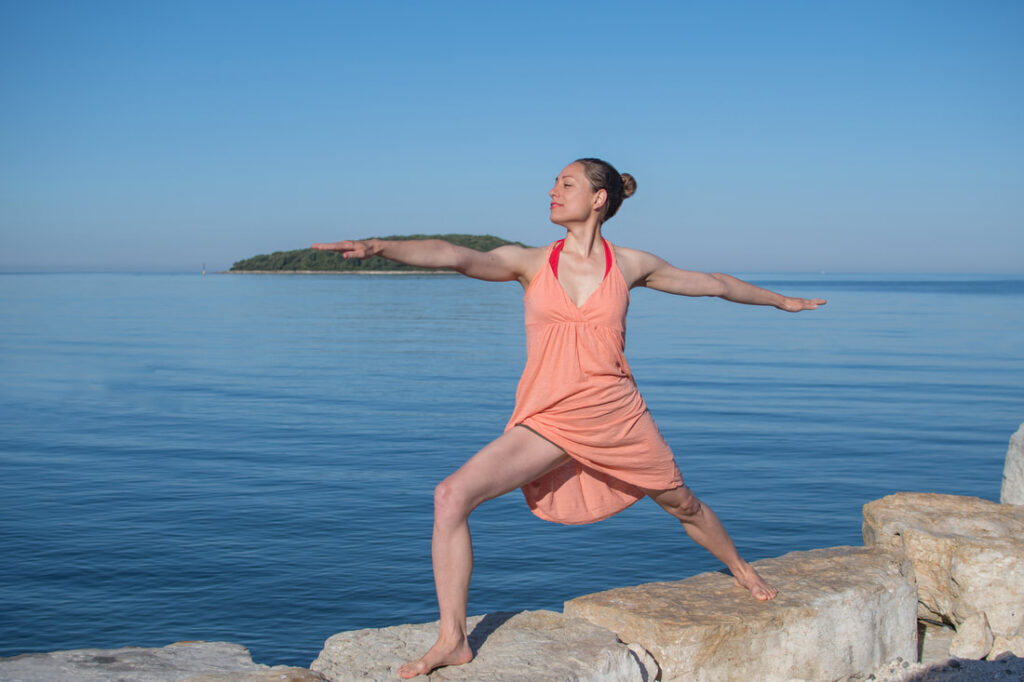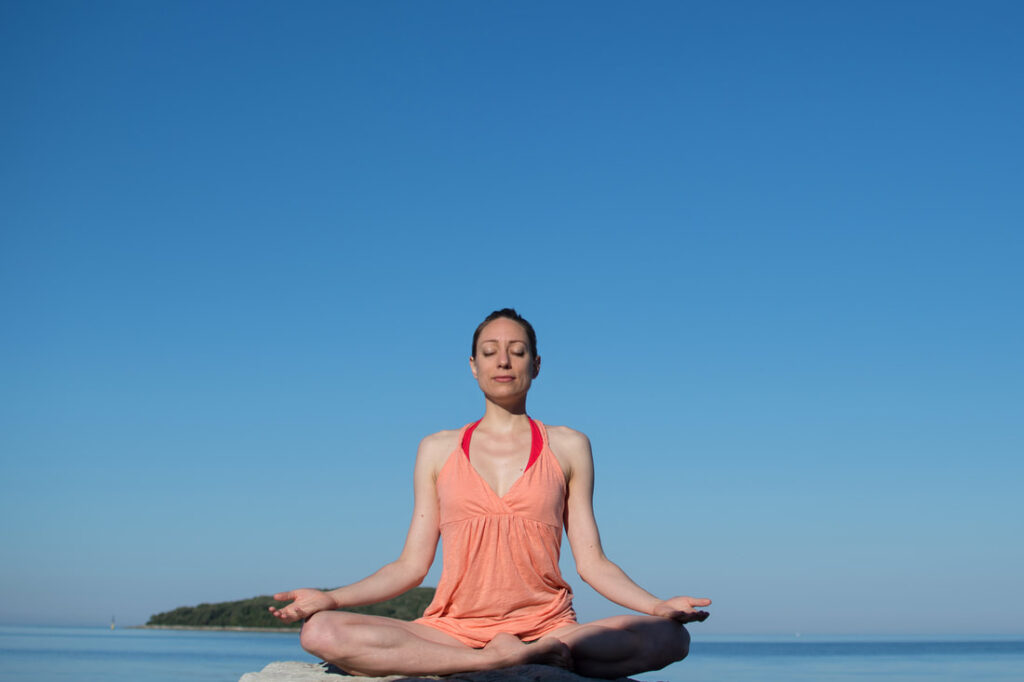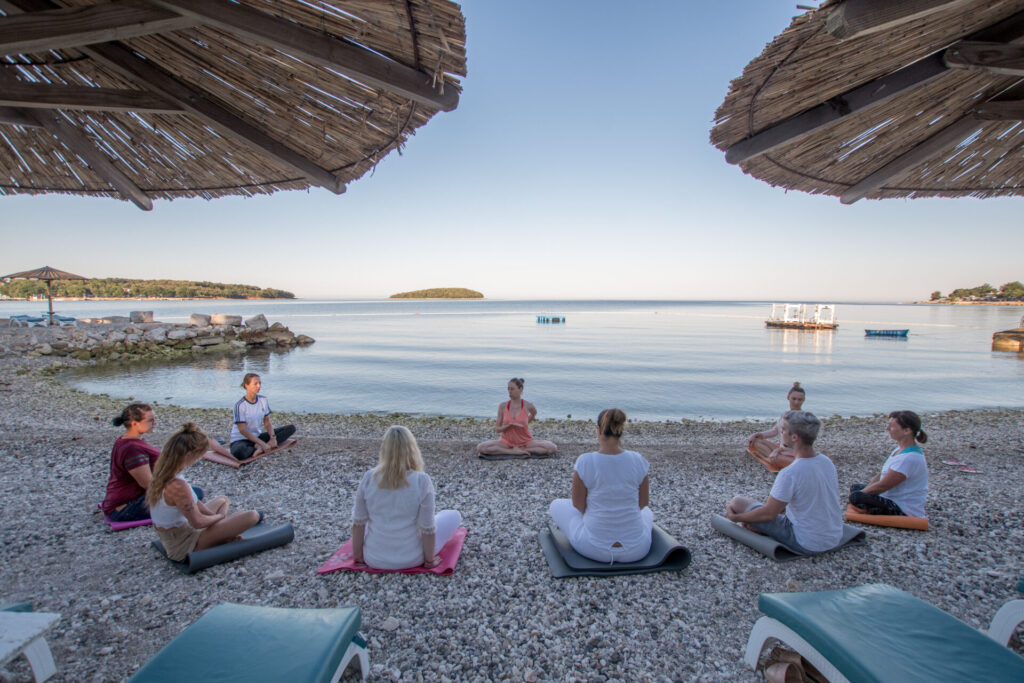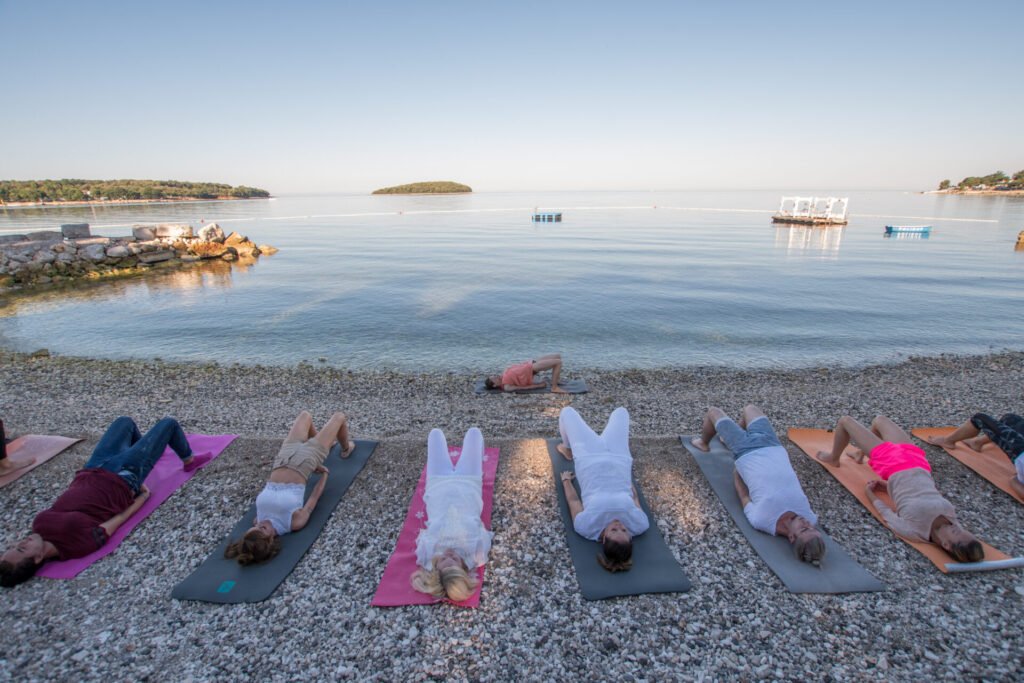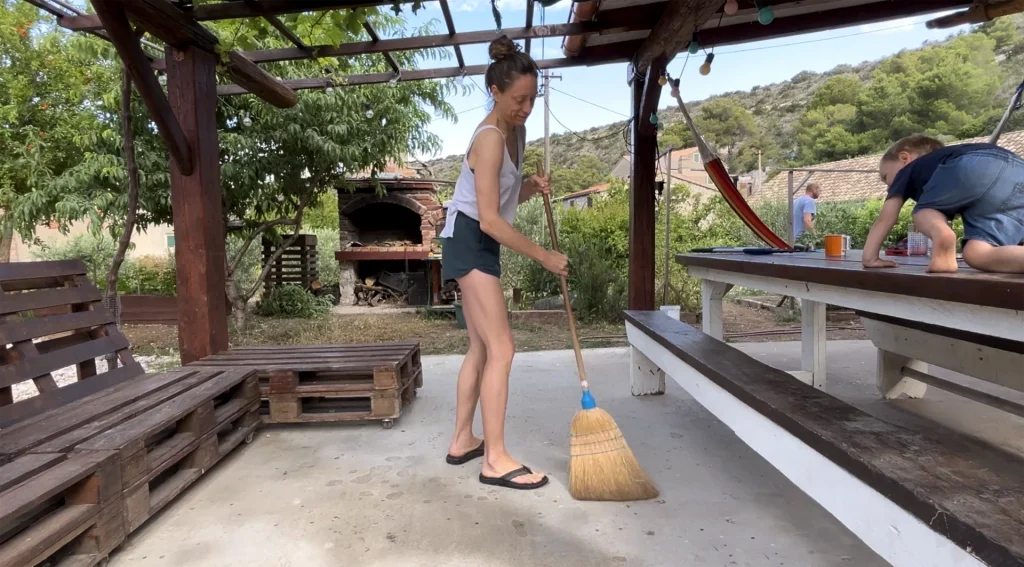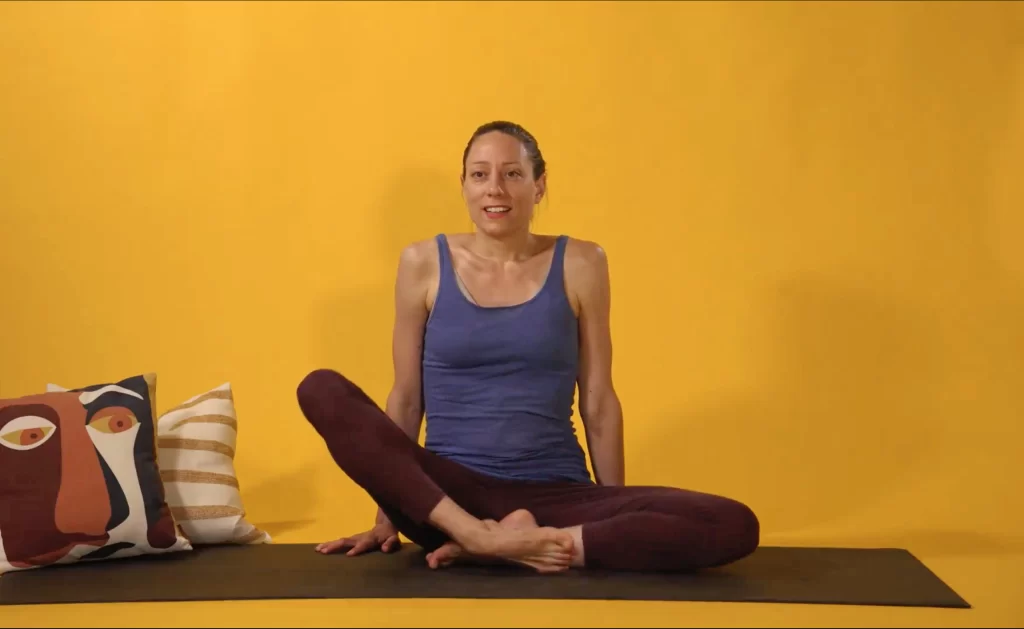Through my own experience
Asanas (yogic postures) are stressful situations for our nervous system that we consciously induce in a controlled atmosphere in order to learn to be calm with the sensations that arise.
Body positions are triggers for emotional and mental states – sometimes they are difficult and we start to think we can’t bear it, sometimes they are pleasant and we think they will never pass. With yoga, we seek balance and awareness to directly know that all feelings are transient. The practice of body movements and positions with breath helps us develop useful qualities such as maintaining a stable attention, a center of gravity in our body, peace and composure…
Yoga prepares us for the challenges that life brings us every day.
We train to return attention to the body, to direct experience. We try to stay continuously in touch with bodily sensations (e.g. direct experience is pain, and the conclusion about that pain is a thought – a concept). In this way, by remaining calm with the states that different asanas awaken, we slowly change the habits and beliefs that are deep in our system (subconscious). All our habits are established biochemical pathways. We can see the habits that condition our behaviors, but they are still not easy to change. The most effective change occurs when we work with the body and mind together.
By being in these unusual positions (asanas) that give us a different view of ourselves and push us out of our “comfort zone”, we maintain vitality, playfulness of the body, mind and young spirit regardless of age and previous life experiences.
We learn to accept and overcome our own limitations, listen to the body, be more present in direct experience.
The path of yoga is slow and gradually changes us, and by understanding ourselves we develop patience for others and remain part of the flow, because life is constantly flowing. Yogic transformation comes from love and joy, not from guilt and rigidity. <3
Tena Rebernjak
